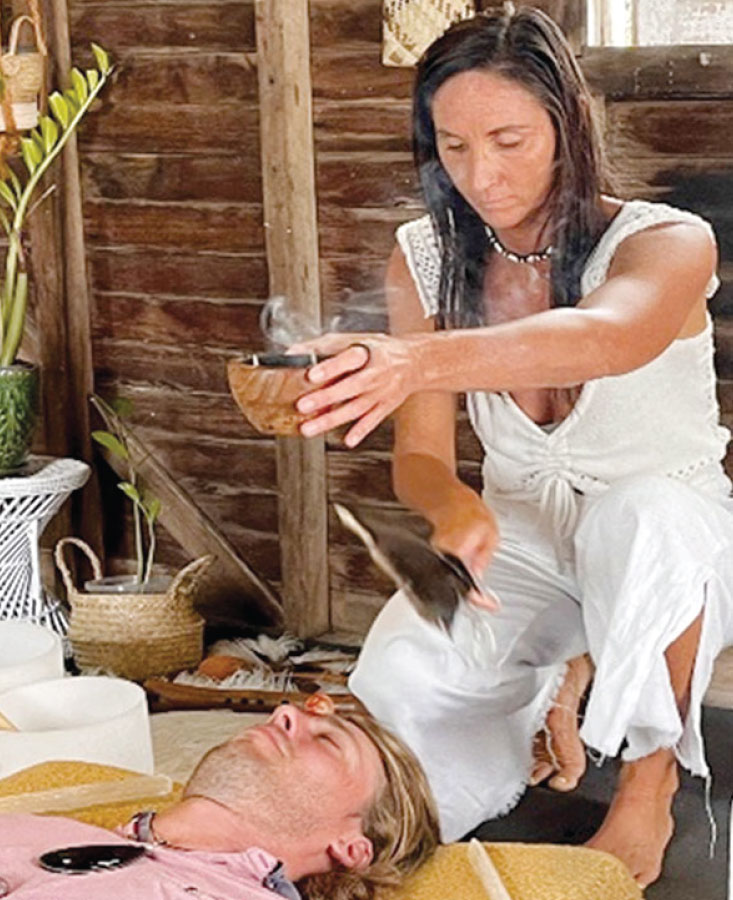Kinesiology is a therapeutic practice that integrates principles from both Western and Chinese medicine, focusing on physical, psychological, and emotional healing.
It is considered a somatic psychotherapy because it works directly with the physical body to improve overall well-being.
Overall, Kinesiology stands out for its holistic approach, effectiveness in pain management, and potential contributions to the evolving landscape of mental health care. Its integration of physical techniques with psychological and emotional principles makes it a versatile option for those seeking comprehensive healing and well-being.


A distinctive feature of Kinesiology is muscle monitoring, where the practitioner assesses the response of specific muscles to gentle pressure.
This technique helps identify areas of imbalance in the body and provides insights into potential underlying issues. Based on the information gathered practitioners use various techniques to correct these imbalances. These corrections can involve gentle touches or movements on specific points of the body.
Beyond physical ailments, it addresses the interconnectedness of physical, psychological, and emotional health, it offers a comprehensive approach to managing and alleviating symptoms associated with mental health conditions and in managing pain without pharmaceutical interventions.
Many clients experience significant relief and improvement during or immediately after a session, particularly in relation to physical discomfort and pain.
As a non-invasive therapy it focuses on enhancing the body’s natural ability to heal and regulate itself. Despite occasional portrayals as alternative or fringe, Kinesiology is increasingly acknowledged for its therapeutic benefits and its potential as part of integrated health care practices.

You can book 1hr, 2hr or 3hr appoinments.
Kinesiology for Kids helps babies, children, and teens deal with the build-up of stress and the negative impacts it can have on our minds, body and the systems that connect these:
Yes, Reiki and EFT (effective freedom technique) and channelled Mediumship Intuitive energy work.
Reiki is a Japanese form of energy healing, a type of alternative medicine using a technique called palm healing or hands-on healing through which a “universal energy” is said to be transferred through the palms of the practitioner to the patient to encourage emotional or physical healing.
EFT (Emotional Freedom Techniques) is an easy healing process you can do for yourself or guide a client in. Based on the meridian system of Traditional Chinese Medicine (TCM), EFT works to move stuck chi, specifically in the arena of blocked emotions. You can get even more significant benefits by combing EFT and Reiki energy healing.
Intuitive channelling is when you connect with the messages of divine guidance and the stream of divine love at the moment. You begin to flow it through you intuitively, often without realising it. You may not recognise when you’re intuitively channelling because guidance and frequency received while intuitive channelling intermixes with your stream of consciousness. So while sometimes called clairvoyant or clairaudient channelling… You’re not hearing or seeing the guidance… You’re just speaking it and flowing it through.
Yes. I have a background in Anatomy through Cert 4 in Fitness, Kinesiology and Yoga.
Yes. I have a background in Anatomy through Cert 4 in Fitness, Kinesiology and Yoga.
Yes. Kinesiology covers a nutritional module with herbs and organs of the body to test these against you to see where your weakness/strengths are.
Yes. A large component of Kinesiology is emotional which relates directly to sabotage programming, these are built in programs in our mental conditioning from as early as the womb space.
Sometimes, depending on the person. There is diversity in what type of healing and balancing a person requires; however, you can use the same tools on people for different things.
Depending on the practitioner and the goal, sessions vary widely. Many begin with simple breathing exercises, which help slow the mind and shift focus to hearing. For sessions like sound baths and vibrational therapy, participants sit or lie down in a comfortable position, sometimes with an eye mask or blanket. Often, bowls are placed on the body and around the head.
Other experiences are more active, and may include yoga or tai chi. In one-on-one sessions, sound therapists are more likely to adjust their treatment through feedback, both verbal and nonverbal, focusing the sound on areas of the body that need more help relaxing.
We acknowledge and pay respect to Aboriginal and Torres Strait Islander communities, Elders, and custodians across Australia, past present and future, whose customs and cultures inspire us.
@Copyright Spiritual Mastery 2024. All Right Reserved